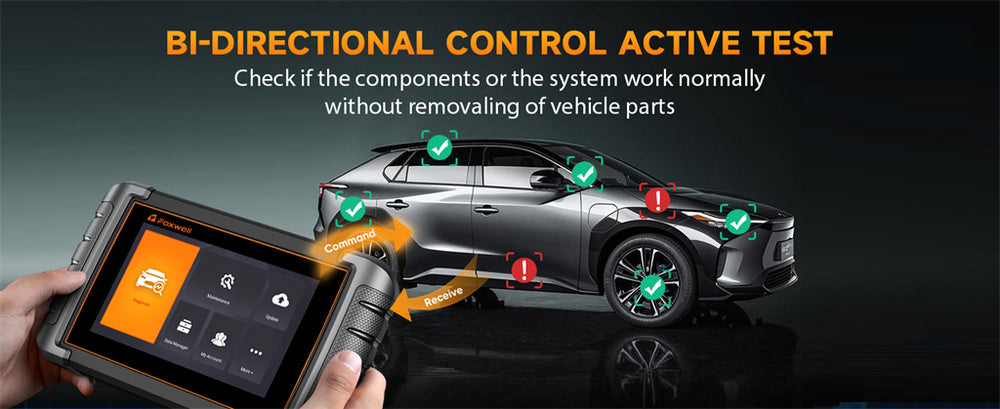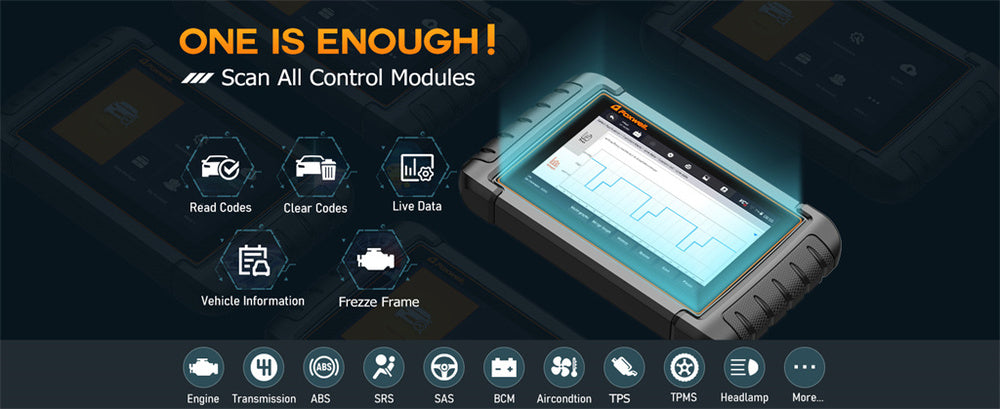Ever had that nerve-wracking moment when your car's check engine light flickers on? It's like your vehicle's way of saying, "Hey, something's up!" But does low oil level cause this? Let's break it down, and see how a car scanner can help.
Can Low Oil Trigger the Check Engine Light?

You might wonder if low oil can be the culprit when that check engine light pops on. While low oil levels don’t usually trigger the check engine light directly, they can lead to conditions that do. When oil levels drop, it can cause low oil pressure, which might prompt the light to turn on.
Low oil pressure means your engine isn’t getting the lubrication it needs, leading to increased friction, overheating, and potential damage. This sets off a chain reaction where sensors detect irregularities, causing the check engine light to activate.
Modern cars are equipped with various sensors that monitor the engine's performance. If any of these sensors detect something off, like high temperatures due to low oil, the check engine light will alert you to the issue. So, while the light isn’t directly linked to oil levels, maintaining proper oil levels can prevent problems that trigger the check engine alert.
Regular oil checks and changes are crucial. They help ensure your engine runs smoothly and can save you from the stress of unexpected dashboard warnings. So, always keep an eye on your oil level to keep your engine happy and your check engine light off.
Why Does Low Oil Pressure Matter?
Low oil pressure is a big deal because it directly affects your engine's health. When your car doesn’t have enough oil, the engine parts don’t get the lubrication they need. This leads to increased friction, causing parts to wear out faster and the engine to overheat.
Overheating is bad news because it can warp parts of the engine, potentially leading to a complete engine failure. Essentially, low oil pressure can turn minor maintenance issues into major, costly repairs.
Engines are designed to run smoothly with the help of oil, which acts like a cushion between moving parts. Without sufficient oil, these parts grind against each other, generating heat and causing damage.
This is why it’s crucial to keep an eye on your oil levels and maintain them properly. If your check engine light comes on due to low oil pressure, addressing it promptly can save you from bigger headaches down the road.
Common Reasons for Check Engine Light
The check engine light can come on for a variety of reasons besides low oil pressure. Some common causes include:
- Emissions System Problems: Issues like a faulty oxygen sensor or catalytic converter can trigger the light.
- Overheating: If your engine is running too hot, it could cause the light to come on.
- Gas Cap Issues: Believe it or not, a loose or cracked gas cap can be the culprit.
- Spark Plug and Mass Airflow Sensor Problems: These affect how your engine runs and can lead to the check engine light turning on.
Diagnosing the Issue
Diagnosing why your check engine light is on can be straightforward with the right approach:
Checking Oil Level: The first step is to check your oil level. Low oil might not directly cause the check engine light to come on, but it can lead to conditions that do. Make sure your oil level is where it should be to keep your engine running smoothly.
Using Diagnostic Tools: Investing in a good diagnostic tool, like the Foxwell NT809TS, can save you a lot of time and stress. This tool can quickly identify the reason behind your check engine light, helping you address the issue promptly. It’s user-friendly and provides accurate readings, making it a great tool for any car owner.
Preventive Maintenance Tips
To keep your engine—and that check engine light—in check, consider these tips:
Regular Oil Changes: Stick to your vehicle's recommended schedule. This ensures that your engine always has clean, sufficient oil, preventing low oil pressure and other related issues.
Check Fluid Levels: Regularly check not only your oil but also other essential fluids like coolant, brake fluid, and transmission fluid. Each of these fluids plays a vital role in your vehicle’s operation, and keeping them at the right levels helps prevent potential problems.
Inspect Belts and Hoses: Belts and hoses can wear out over time, leading to leaks or breaks that can cause significant damage. Regular inspections can help you spot wear and tear early and replace these components before they fail.
Routine Tune-Ups: Scheduled tune-ups allow mechanics to catch potential issues before they become serious. This includes checking spark plugs, filters, and other components that can affect your engine’s performance.
Use Quality Parts and Fluids: When replacing parts or topping up fluids, always use high-quality products that meet your car manufacturer's specifications. This helps ensure the longevity and efficiency of your vehicle.
Finding Reliable Oil Change Services
Finding a trustworthy place for oil changes is vital for keeping your car in top shape. You want a service that’s quick, reliable, and doesn’t break the bank. Places like Strickland Brothers 10 Minute Oil Change are great because they specialize in fast, efficient service. You can get in and out without spending your whole day waiting. Plus, they have trained professionals who know exactly what your car needs.
Reliable services not only change your oil but also check other vital fluids and perform basic inspections. This comprehensive approach ensures that small issues are caught early, preventing more serious problems. Regular visits to a reputable oil change service keep your engine running smoothly and your mind at ease, knowing your car is well taken care of.

Conclusion
Regular maintenance, including timely oil changes, is key to keeping your car in top shape and avoiding those unexpected alerts. So next time your check engine light comes on, don’t panic—just check your oil and keep up with regular car care!
FAQs
Can driving with low oil damage the engine?
Yes, driving with low oil can cause severe engine damage due to increased friction and overheating.
How often should I check my oil levels?
It's recommended to check your oil levels at least once a month and before long trips.
What should I do if my check engine light comes on due to low oil?
Stop driving immediately, check and refill your oil, and consult a mechanic if the light persists.




Leave a comment
This site is protected by hCaptcha and the hCaptcha Privacy Policy and Terms of Service apply.